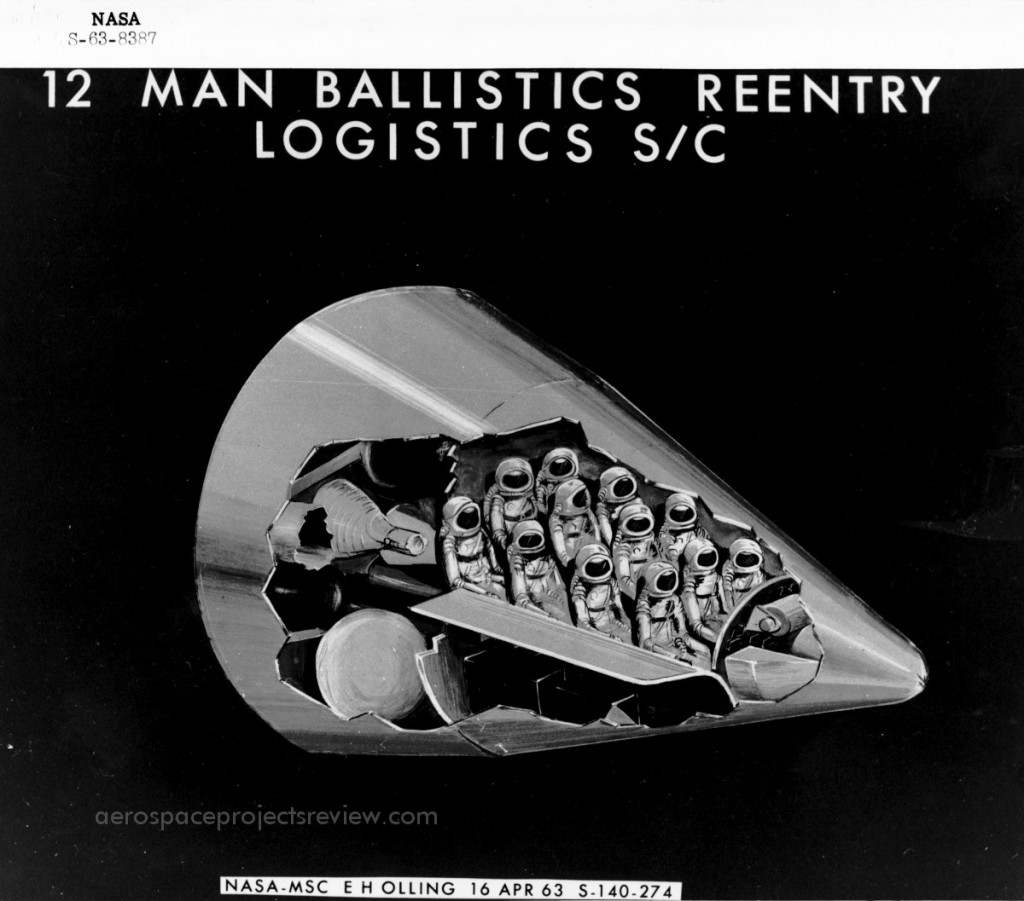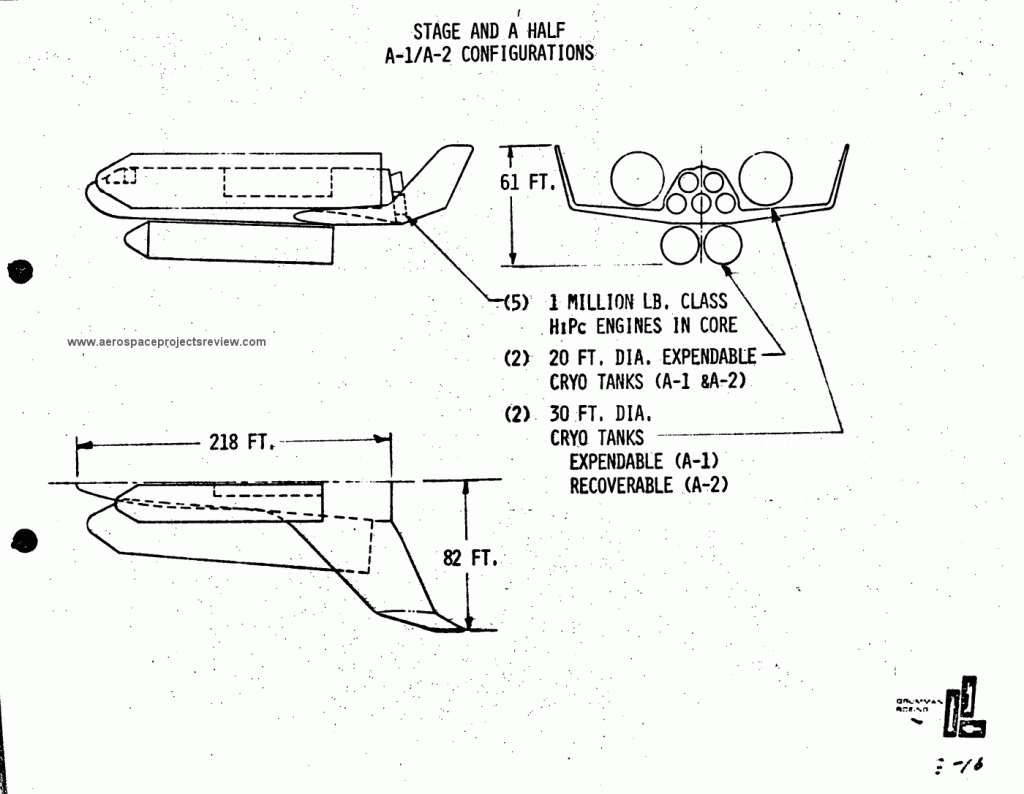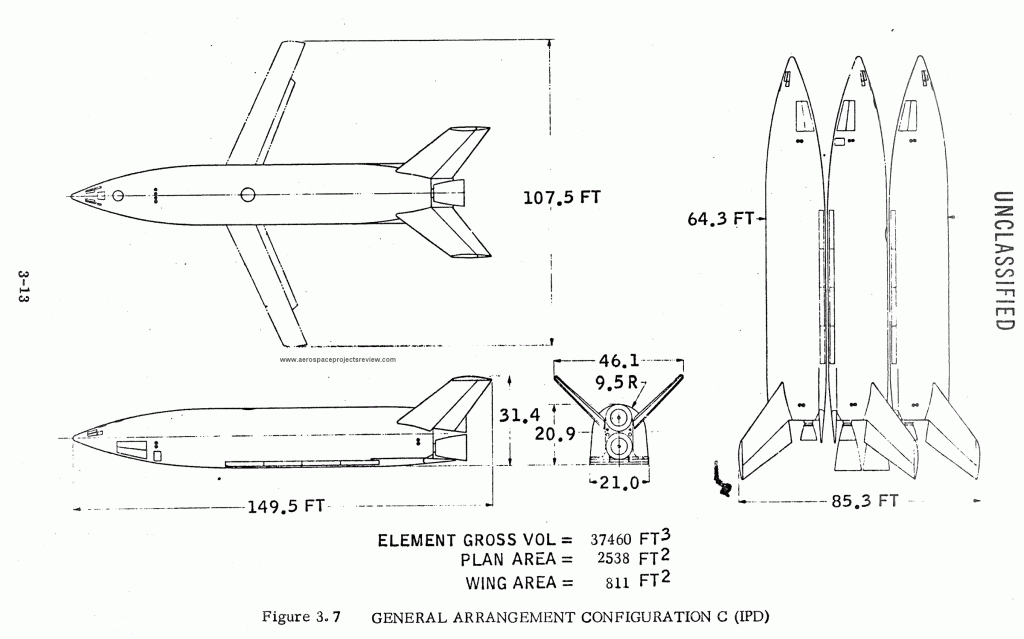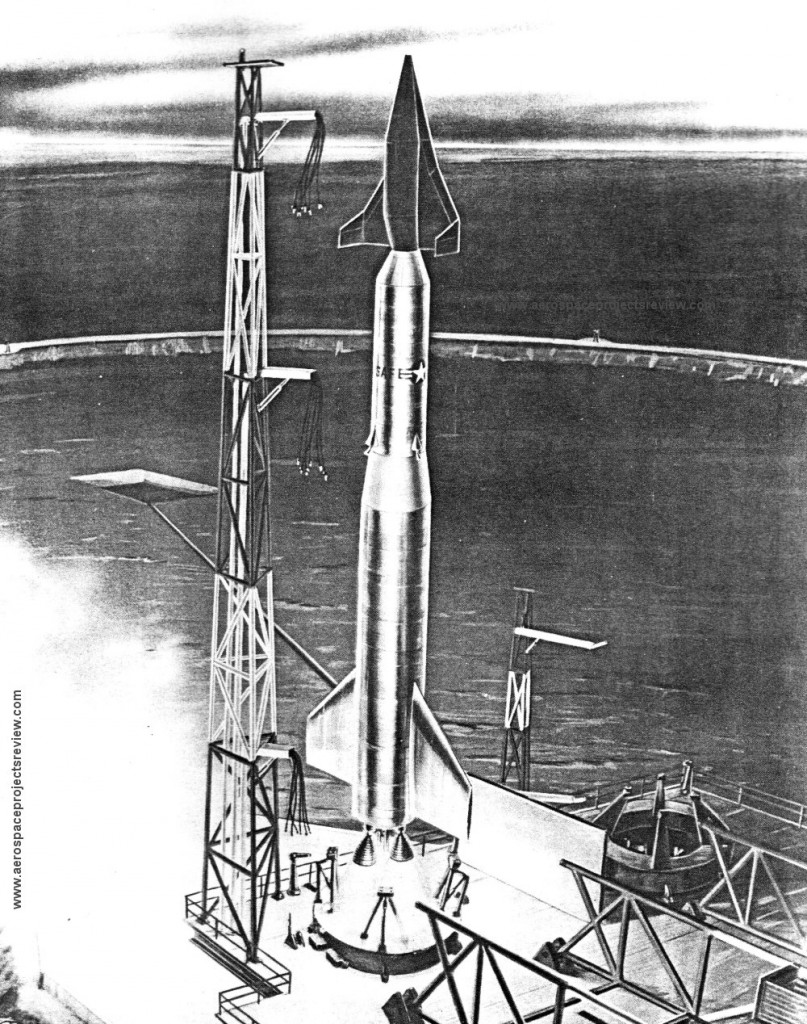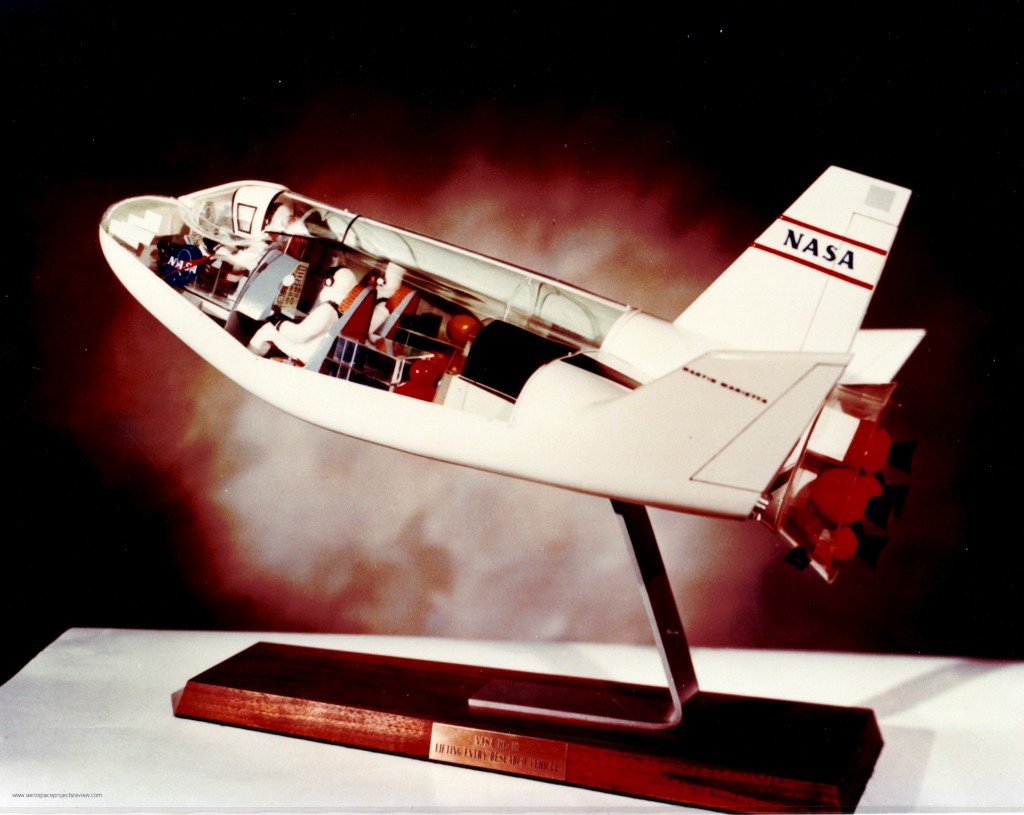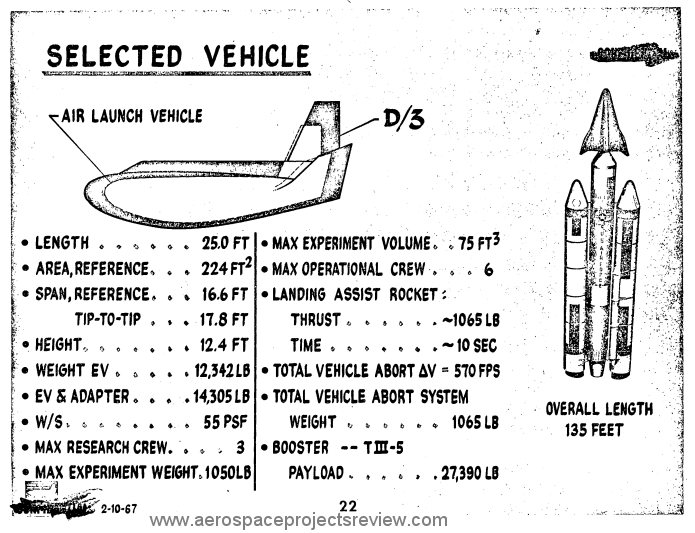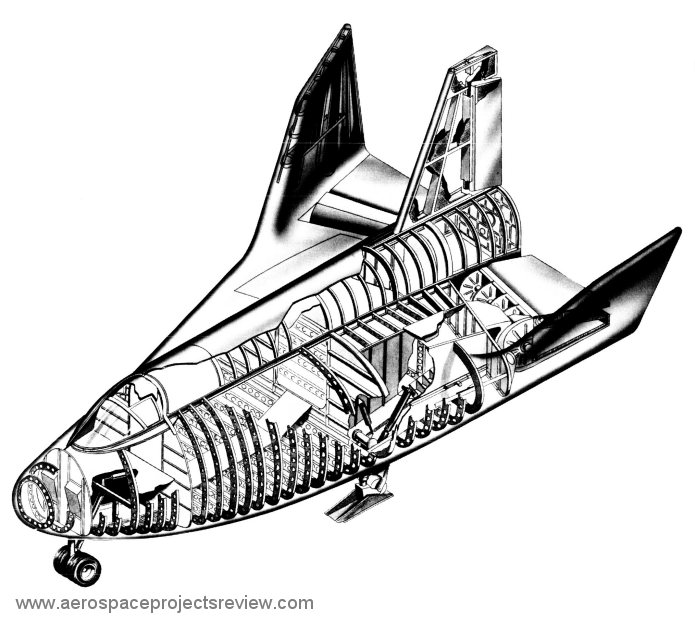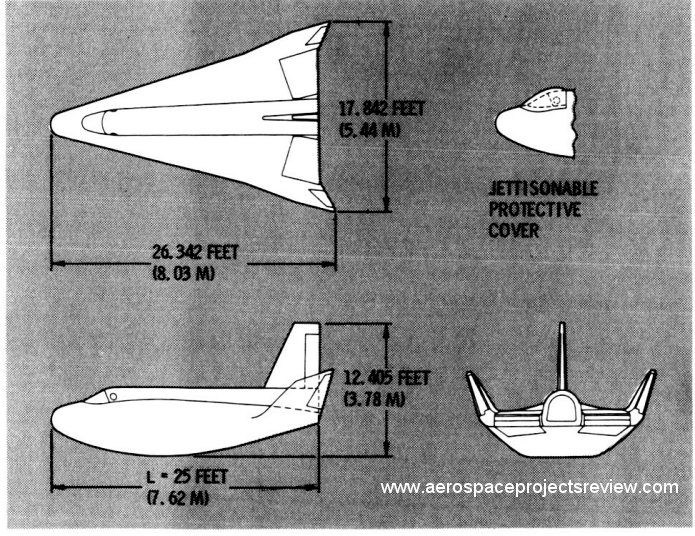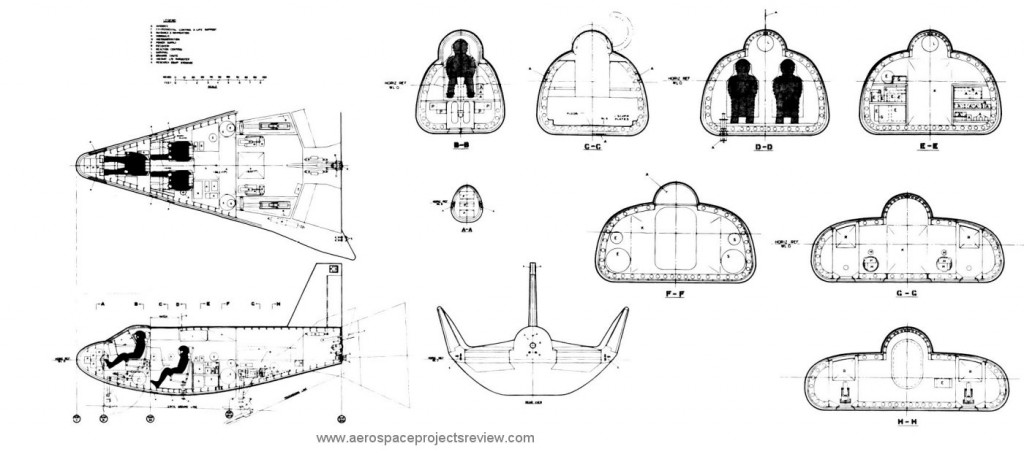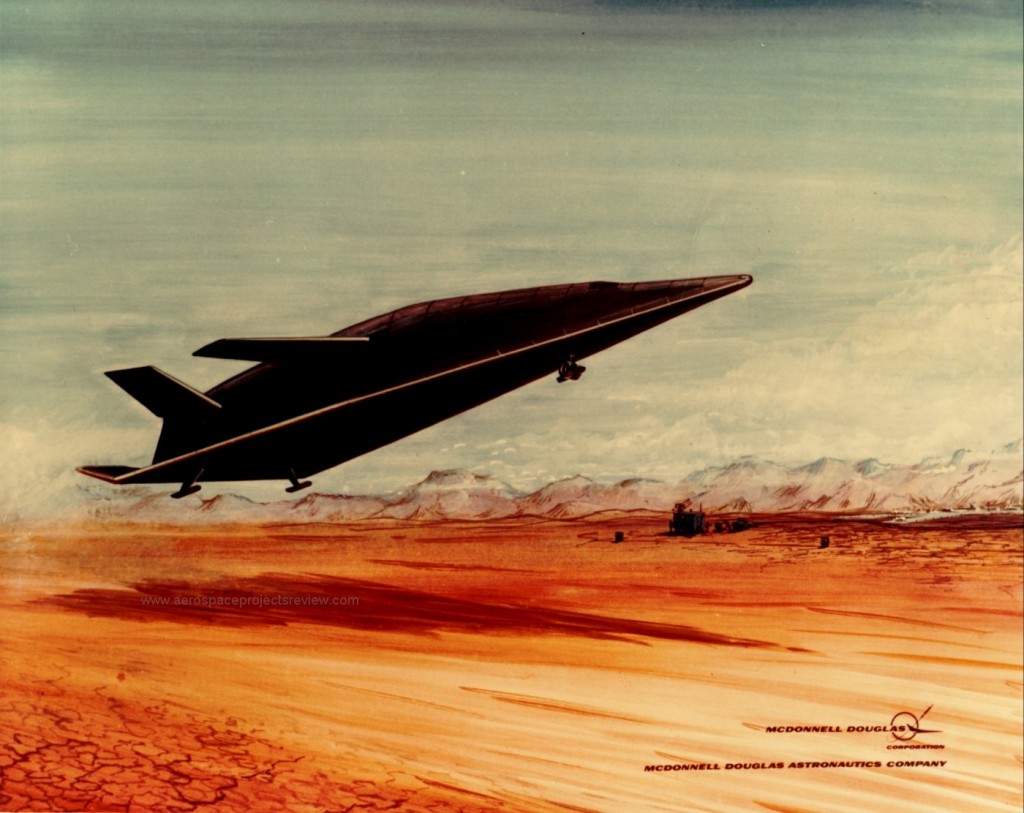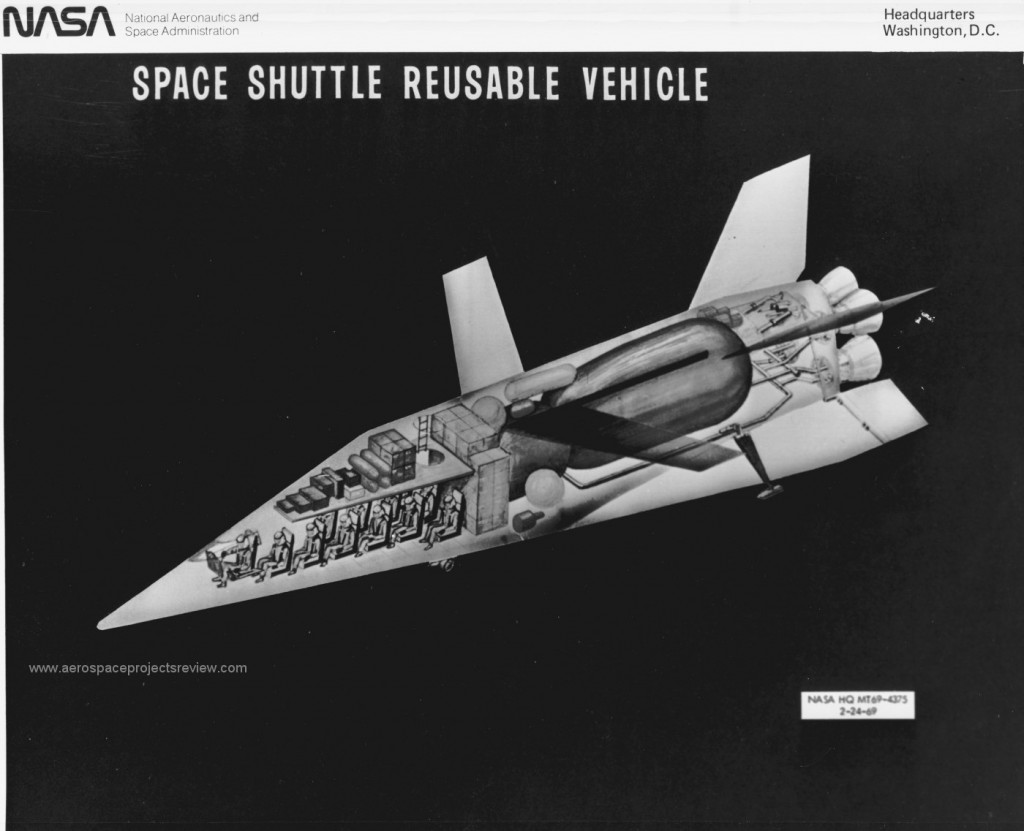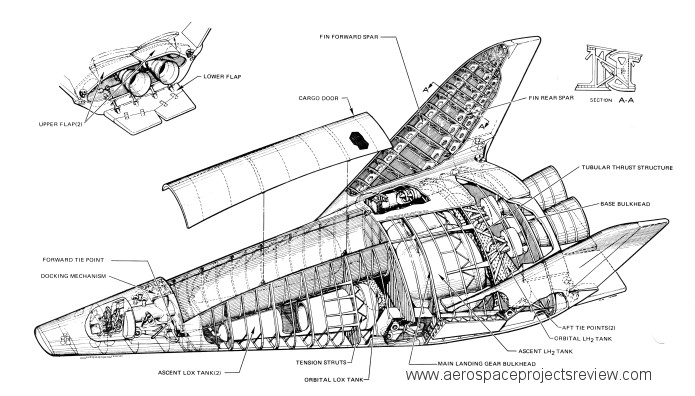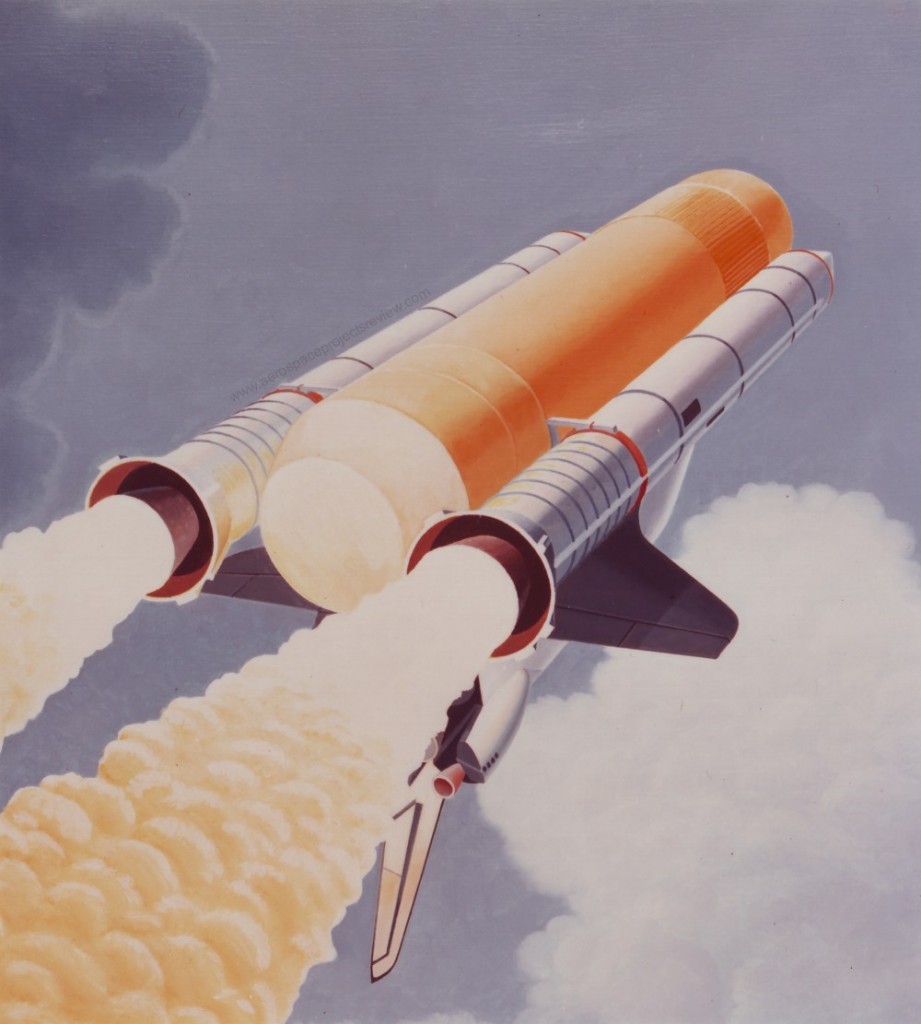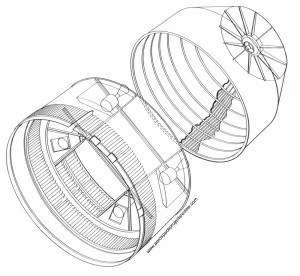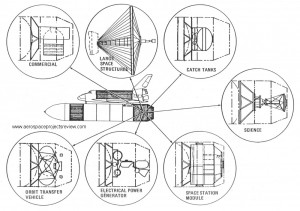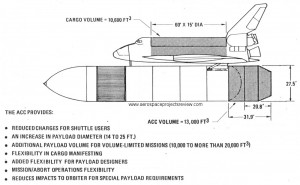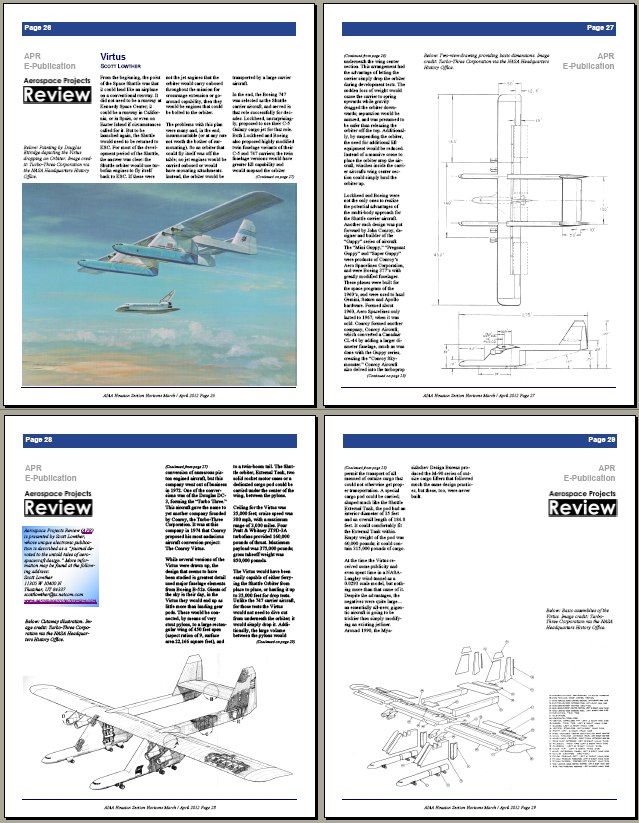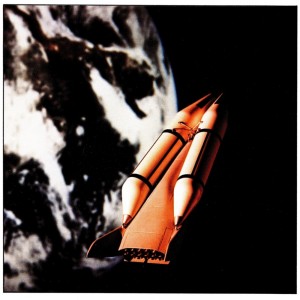From the NASA HQ historical archive, a 1963 illustration of a large 12-man Ballistic Logistic System capsule. Such capsules were designed by NASA and various contractors to go atop Saturn boosters to provide crew and cargo transport to and from the large space stations that NASA fully expected to have in orbit in the early to mid 1970’s.
One of the more unconventional Space Shuttle concepts was this minor Grumman concept from 1971. Similar to the Lockheed STAR Clipper stage-and-one-half design, this design featured a fully reusable rocket powered spaceplane with expendable propellant tanks. Unlike the STAR Clipper, the Grumman design had four unattached tanks and a non-lifting body wing-body orbiter.
A 1969 Convair concept for a space shuttle. The Triamese used three vehicles that shared outer mold lines and many components… two as boosters, a third as the orbiter. The orbiter would have more complex rocket engines, featuring extendable nozzles for improved high altitude performance. All three included cockpits, relatively small high aspect ratio wings that would be stowed internally and flip out for landing, and flip-out turbofans for re-entry cruise and go-around capability. Numerous variants were studied including biamese versions using dissimilar boosters and orbiters.
A reproduction of admittedly dismal quality of a Martin Co. painting of their December 1958 Dyna Soar configuration at launch. This configuration, the product of a team-up of Martin and Bell, competed against Boeing (and other companies) and lost; what must have been grating for the Martin-Bell folks was that the Boeing design that won looked nothing like the final Dyna Soar design… which actually looked a whole lot like this vehicle.
The Dyna Soar is here being shown launched by a modified Titan I ICBM. This booster would have fallen far short of orbiting the Dyna Soar; instead it would have simply tossed it on a long hypersonic suborbital trajectory. This would have been a purely experimental aircraft, the natural follow-on to the X-15.
From the NASA HQ history office, a photo of a Martin Marietta model of the HL-10. The ID plaque on the base of the model reads “NASA HL-10 LIFTING ENTRY RESEARCH VEHICLE,” but the interior clearly shows that this design was intended for transportation of crew, and possibly cargo, to space.
This most likely dates from around 1967, when Martin was studying HL-10-type orbital craft for NASA. This appears to be the “D/3” configuration, one of a fairly large number of HL-10-based designs. The D/3 was capable of carrying three crew (up to six) and would be launched atop a Titan IIIc launch vehicle.
The McDonnell Douglas Model 176 was a generic spaceplane design derived from the FDL-7 (Flight Dynamics Lab – USAF Wright-Pat). It was incorporated into small spaceplanes adequate for taking a few crewmembers to a space station on up to Space Shuttle competitors. Below are two pieces of art (found in the NASA HQ historical archive) showing a late 1960’s concept for a Model 176 optimized for the ILRV (Integral Launch and Recovery Vehicle) role. ILRV was one of the immediate predecessors to the Space Shuttle program.
The Model 176 was a sleek dart-like design with stubby fins. While details varied from iteration to iteration, all (or nearly all) featured high aspect ratio variable geometry wings for landing.
A cutaway diagram of a Boeing-Lockheed Space Shuttle concept derived from the Lockheed STAR Clipper design. This and other related concepts was covered in great detail in issue V3N2 of Aerospace Projects Review.
You can download a 1.5 megabyte version of this diagram; the link is HERE. To access it, you will need to enter a username and password. The username: the first word in the body of the text on page 8 of APR issue V3N2. The password: the first word in the body of the text on page 24 of the same issue. Note that both are case sensitive.
The Space Shuttle system was seemingly designed for modularity… the orbiter could be replaced, the boosters could be replaced. Payload shrouds could be placed alongside the tank in place of the orbiter, or on the nose of the external tank either replacing the orbiter or supplementing it.
Martin calculated that the payload for the standard Shuttle using lightweight fiber wound solid rocket boosters and a lightweight ET going to a 215 nautical mile orbit would be 60,800 pounds. Payload to the same orbit would increase to 69,700 pounds if the ET was taken all the way to orbit (the more efficient SSMEs would be used all the way to orbit rather than relying on the OMS engines). By using the ACC and dragging the ET and ACC all the way to orbit, total payload would be 60,100 pounds.
A brochure from Martin Marietta describing the ACC is available HERE.
The Houston AIAA section has published a 4-page article I put together on the Conroy “Virtus,” a twin-fuselage heavy lift aircraft built from B-52 parts meant to serve as the Space Shuttle Carrier Aircraft. You can download it (in the March/April 2012 issue of Horizons) for free here:
Another one from Lockheed Horizons, a rare color photo of a later STAR Clipper configuration. This one-and-a-half-stage-to-orbit design dates from the early days of the Space Shuttle program. Much, much more on the STAR Clipper and its Shuttle descendants can be read about in issue V3N2 of Aerospace Projects Review.
